 Algerian bridal outfit is magnificent. If you’ve never visited Arab countries, there is a great possibility that you haven’t ever seen anyone dressed and jeweled as richly and opulently as these brides. Dozens of rows of pearls, massive gold jewelry, gems, embroidery with gold and silver threads – everything is glowing and sparkling. Every bride looks like a royal queen on her wedding day. It is a tradition, so those who are poorer and can’t afford so many jewels, borrow or rent them. But let’s find out what other wedding traditions do they have in Algeria.
Algerian bridal outfit is magnificent. If you’ve never visited Arab countries, there is a great possibility that you haven’t ever seen anyone dressed and jeweled as richly and opulently as these brides. Dozens of rows of pearls, massive gold jewelry, gems, embroidery with gold and silver threads – everything is glowing and sparkling. Every bride looks like a royal queen on her wedding day. It is a tradition, so those who are poorer and can’t afford so many jewels, borrow or rent them. But let’s find out what other wedding traditions do they have in Algeria.
Due to its geographic position at the crossroads of the Mediterranean Sea and the Sahara Desert, Tlemcen (a city in north-western Algeria) has been situated at the heart of diverse civilizations for more than 2,000 years. In the 13th century, the city was Algeria's capital under the rule of the Zayyanid kings. When Algiers became the new capital of the country three centuries later, Tlemcen kept its sophisticated culture and its exceptional diversity of arts and crafts. In 1585, the Venetian illustrator Cesare Vecellio affirms in one of the first books ever published on the worlds costumes that the women of Tlemcen are dressed with magnificence.
Today, the traditional bridal costume called “lebset el-arftan”, which means the caftan dress, is still renowned for the rituals and ceremonial practices related to it. Its richness and originality evoke the heritage of the Berber-Amazigh, the Roman, the Arabic, the Andalusian, and the Ottoman cultures which have stimulated the evolution of the Maghrebian art of dress. The costume tradition is the vector of a fundamental economical resource for the city. It requires the skills of many craftsmen from different fields, such as silk weaving, embroidery, and jewelry.
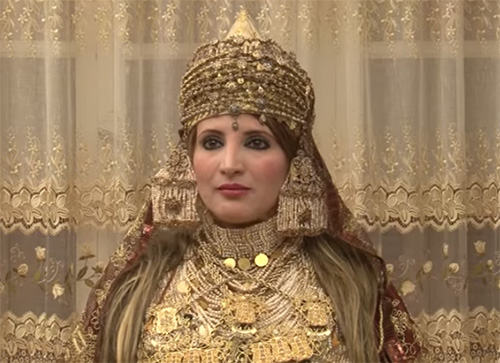
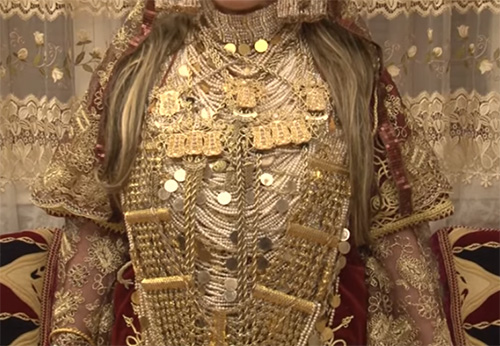
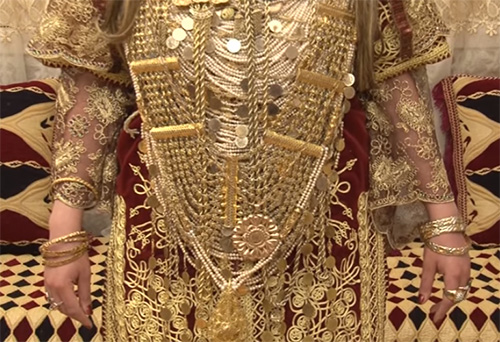
The silk weaver uses a traditional loom to make striped silks with golden and silver threads associated with colorful silk threads. This precious traditional textile called “mejboud” is used to make pieces of cloth which play a central role in the wedding ritual. The blouza dress, the bridal veil, the ritual wrapped cloth over the caftan, and the silk belt are all woven following this medieval technique.
“The ceremonial “mendil” headscarf is finished with silk fringes. Women learn this craft. Our parents used to do it for ages. The fringed headscarf goes with the headdress of the caftan costume”, says Mohamedi Mohamed, Algerian silk weaver.
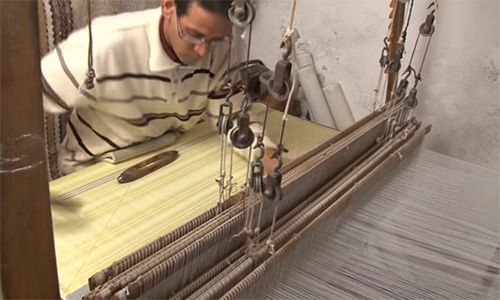
For the velvet caftan, the embroidery designer combines patterns having an antique symbolic significance with arabesques and volumes reinvented season after season.
“These are the ancient embroidery patterns of the velvet caftan. The Tlemcen bride leaves her father’s home wearing the caftan. The first step of the process is the embroidery pattern making”, explains Nassim Faredheb, the embroidery designer.

The embroiderer follows the patterns and applies them on the velvet of the caftan with a technique called “fetla”.
“Since ancient times, we make the bride’s caftan for the ritual of leaving the family’s home. The bride wears her mensouj silk, her garments, her fouta wrapped cloth, her hzem belt, her chechiya headgear, and her gold jewels, before she leaves. When we embroider this element, we fold it and sew it. It is worn on the bride’s head, with the caftan costume”, says Benzerhouni Sidi Mouhamed, the embroider.


“Mejboud” is another technique used to embroider the conical traditional headdress called “chechiya”.
Algerian jewelers produce baroque pearl necklaces, earrings, and all kinds of jewels which are essential to protect symbolically the bride's head and chest.
“We still work with the knowledge we inherited from our grandfathers and fathers. The khorsa earring is made with the same ancient technique. We create new designs every time, but in the same traditional concept”, says Baba Hmed Ilyes, the jewelry maker.
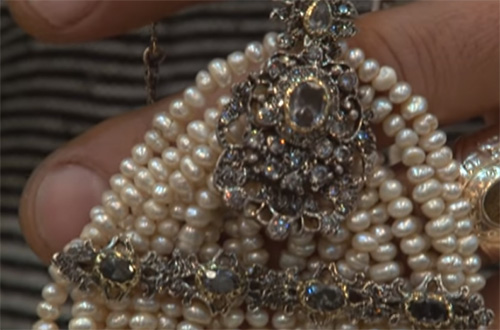
Lebset el-arftan embodies the wedding festivity which constitutes the most central event of community life. The symbolic functions of the costume essentially derived from the prophylactic virtues attributed to henna, pearls, red stones, gold, spangles, and other elements endowed with the power to chase away demons. These items are passed down through the family. Those who cannot afford such costly accessories and jewels, can always hire or borrow them.
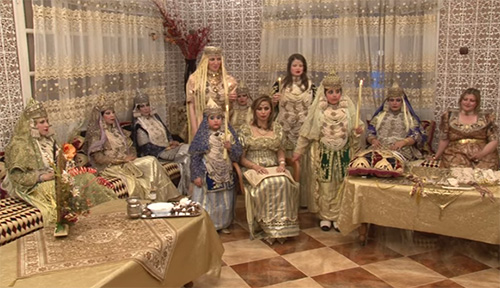
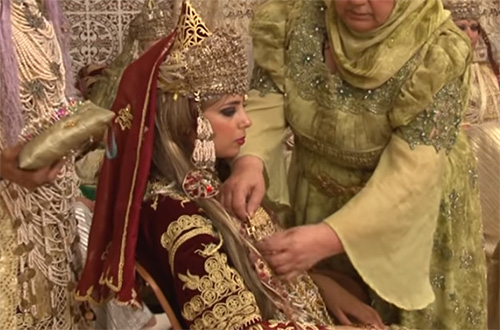
When the bride is dressed, she leaves her family home wrapped in a golden hand-woven silk veil. The ceremony starts with the make-up ritual – one of the bride's aunts draws red and silver circles on her cheeks. These symbolic circles complete the costume and strengthen the protection of the bride against magic spirits that could do her harm in her future life as a married woman.
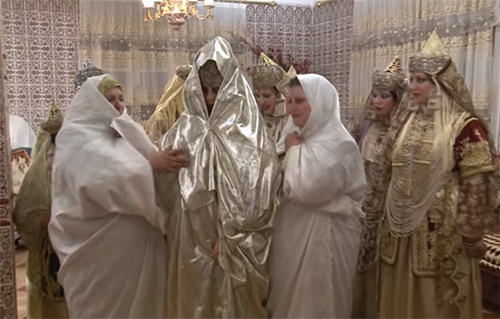

Nowadays, wedding festivities take place in top hotels and public halls.
The ceremonial practices and craft activities linked to the bride's costume are deeply intertwined. Together, they constitute one of the most prominent cultural expressions of the identity of the Tlemcen people. Older craftsmen do their best to hand over their knowledge to their sons. But today, professional schools and institutes have also opened in Tlemcen to preserve local skills and teach them to the next generation.
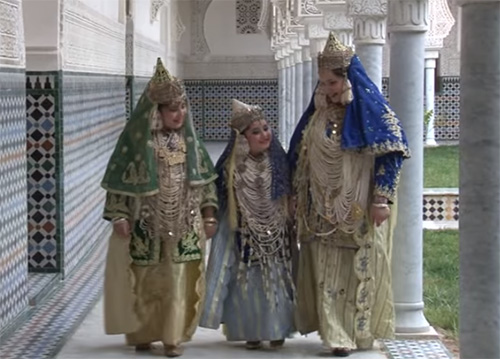
Preserving the costume tradition is a priority for all Tlemcen families. From the age of three, young girls are dressed up and adorned with jewelry like little brides to celebrate annual religious festivals. The rituals linked to the bridal dress is a cultural heritage that spends hundreds of years. It perpetuates the creativity and the identity of Tlemcen.
(c) UNESCO


